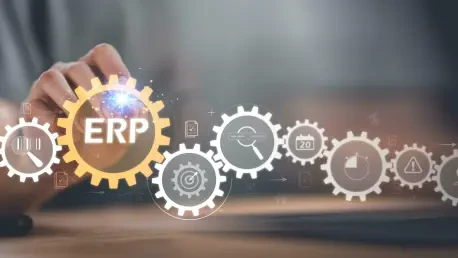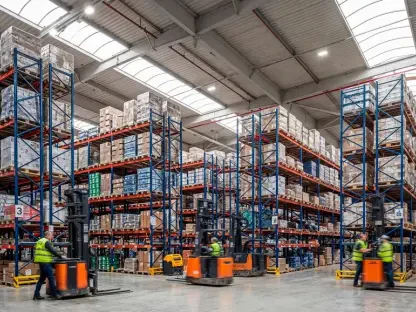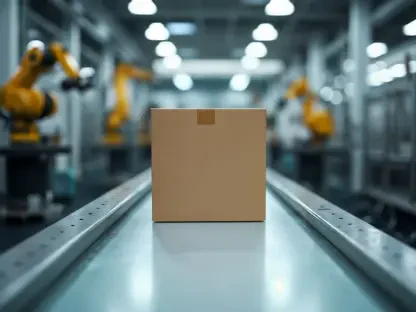In today’s fast-paced era of technological progression, adapting to rising operational demands is crucial for industry leaders like Clorox. Recognizing the need for modernization, Clorox is undertaking a major update by transitioning from its 25-year-old technology framework to a state-of-the-art Enterprise Resource Planning (ERP) system. This ambitious initiative is slated for launch this July, initially focusing on Clorox’s U.S. supply chain operations and broader business activities, as the corporate giant seeks to modernize its core infrastructure. This sweeping transformation is poised to deliver significant improvements in operational efficiency and productivity.
Embracing Digital Transformation
Real-Time Data Visibility and Demand Planning
Clorox’s move to a modern ERP system signifies a major shift towards embracing digital transformation. By implementing this new technology, Clorox aims to achieve crucial enhancements, such as real-time data visibility and improved demand planning. This aligns with an overarching industry trend where companies invest in modern ERP systems to address the growing need for accurate data, streamlined operations, and improved decision-making in a competitive market. The ability to access and analyze real-time data is expected to empower Clorox with insights that will drive better operational strategies and customer satisfaction.
The critical aspect of real-time data integration provides Clorox the means to adapt swiftly to market changes, optimizing its supply chain dynamics. As the new ERP system supports enhanced collaboration between various departments, Clorox anticipates better alignment of sales forecasts and inventory levels. This synchrony is vital for minimizing wastage, reducing costs, and enhancing overall efficiency. With improved demand planning, the company can meet customer needs more precisely and potentially increase its market share. Thus, the ERP system is not just an operational upgrade but a forward-looking strategic tool influencing how Clorox competes in the future.
Managing Challenges of Transition
Transitioning large-scale infrastructure systems like ERP presents inherent challenges, but Clorox has proactively adopted measures to mitigate potential risks. The company is building surplus inventory by adding 1.5 weeks’ worth of goods, increasing its typical inventory from four weeks’ worth to 5.5 weeks. This strategy aims to provide a sufficient buffer to protect against stockouts during the transition period, ensuring smooth business operations. While this decision temporarily impacts financial statements by overstating organic sales by around 2% to 3% for fiscal year 2025, Clorox expects it will stabilize by fiscal year 2027, presenting a calculated risk to balance.
Clorox’s robust mitigation strategy underlines its commitment to ensuring a successful transition to the ERP system while acknowledging the financial nuances involved. By creating a strategic inventory cushion, the company is better positioned to handle unforeseen disruptions that often accompany such complex transformations. Through this approach, Clorox demonstrates that it is prepared to tackle the financial implications head-on, paving the way for a streamlined, digitally enhanced operational future. Despite temporary financial fluctuations, Clorox’s comprehensive planning is directed toward gaining long-term operational stability and growth.
Phased Transition Approach
Initial Implementations and Pilot Programs
Clorox demonstrates its commitment to a seamless ERP transition by employing a phased approach, initially focusing on global financial reporting and planning. This methodically staggered deployment allows for the gradual migration of core processes such as order fulfillment and management, expected to take place over six months. The company launched its first phase under the new ERP system in January, giving Clorox a sound foundation to concentrate on operational transitions starting in July. It is anticipated that these strategic transitions will minimize disruptions, ensuring smoother integration into the existing operational framework.
Moreover, Clorox’s careful planning includes pilot programs, such as a successful trial conducted in Canada, which reportedly proceeded without any significant hitches. This pilot initiative reflects Clorox’s foresight in addressing potential roadblocks and refining implementation strategies before a full-scale rollout across all operations. Through these test runs, Clorox can identify potential challenges and rectify them, further assuring the phased transition’s success. By methodically migrating critical functions and learning from trial experiences, the company lays a structured path to achieve enhanced operational efficiency.
Learning from Industry Precedents
Understanding previous industry precedents serves as a valuable model for Clorox’s ERP transformation. Observing other companies’ successes and challenges provides insights into best practices and pitfalls to avoid. For instance, Clorox draws lessons from the experiences of J&J Snack Foods, which faced a $20 million loss in one quarter due to disruptions from its ERP implementation. Clorox is making strides to mitigate such risks through ample preparatory work, consultative expertise, and a phased execution approach, gaining confidence in managing the transition without costly mistakes.
Furthermore, Clorox is leveraging insights from peers such as Mondelēz International and Lamb Weston, who have also undergone similar digital transformations. These observations help Clorox in refining its strategy by adapting effective techniques and avoiding errors encountered by others. Clorox has developed strategic collaborations with consultants and retail partners, ensuring a comprehensive network of support and expertise throughout the ERP journey. With this collective knowledge and assistance, Clorox is poised to steer its transformational goals toward operational excellence while embracing industry-wide shifts toward digitalization.
Future Considerations and Impact
Anticipated Productivity Gains
Despite initial challenges, Clorox envisions significant long-term productivity gains stemming from the ERP implementation, especially within its supply chain. The focus on attaining improved operational efficiency lies at the heart of Clorox’s strategic approach to technology modernization. These anticipated productivity benefits are expected to materialize fully by fiscal year 2027. Clorox remains optimistic about realizing enhanced efficiencies, highlighting the efficacy of the ERP system in creating a robust, data-driven infrastructure that eases management and decision-making processes.
Enhanced operational capabilities ultimately propel Clorox toward fortifying its position in the marketplace, thus promoting commercialization and expansion. It expects an increase in precision, adaptive forecasting, and better resource allocation on the new platform. By systematically driving these improvements, Clorox will advance its ability to respond dynamically to changing market dynamics and grow business responsiveness. The resulting upsurge in operational efficiency and agility will not only stabilize Clorox’s value proposition but also create additional opportunities for innovation and growth.
Strengthening Long-Term Resilience
Embracing technological change is not merely a necessity but an opportunity for Clorox to enhance its market presence and operational excellence. Adapting to new technology empowers Clorox to uphold its competitive edge, streamline processes, and optimize its resource management, thereby solidifying its position as a forward-thinking leader in the industry.









